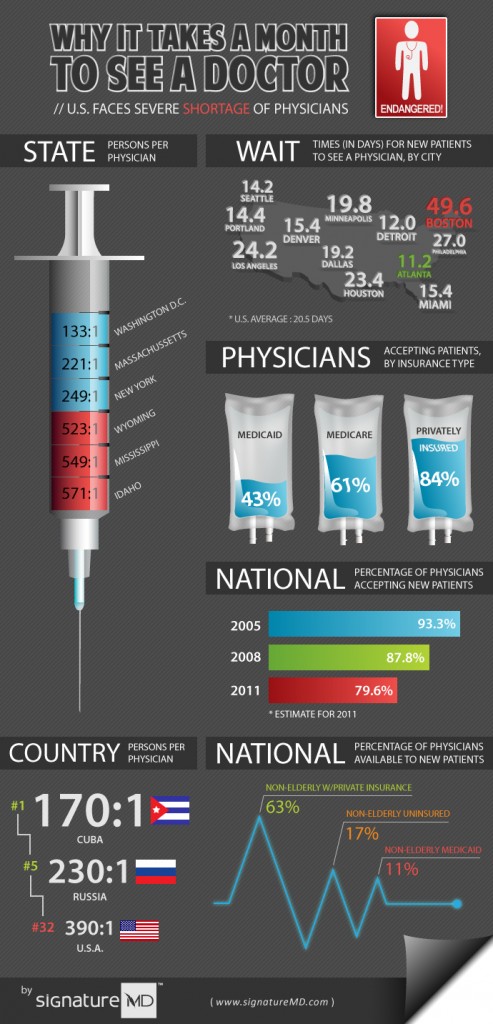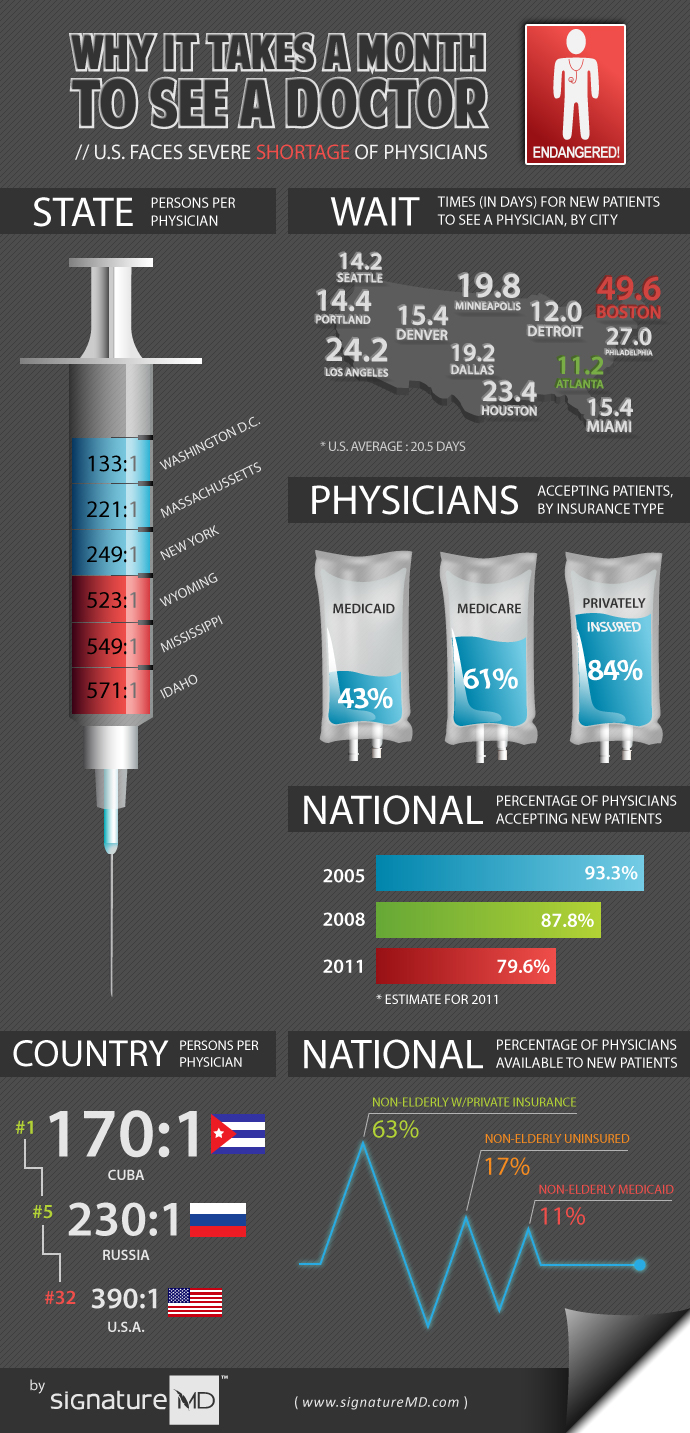
Why It Takes Americans’ a Month to See a Doctor (Infographic Included)
Relocated, retired, reinvented in new careers that are more lucrative and less burdensome, the primary care physician is an endangered species in the USA.
The cost of medical school is a daunting amount of debt to carry for a young resident doctor, especially when they are hamstrung by shrinking payouts in Medicare and HMO’s that have whittled down the amount of money they make, causing an equally disturbing trend of patient cramming to maximize income.
Not good for the patient, or the doctor.
The perfect storm in medicine has arrived, as our large baby boomer, aging population has combined with millions of uninsured working people who would gain coverage under legislation championed by President Obama.
The result? Doctors are fed up and either going solely into specialty care, or providing consultancies to large pharmaceutical companies or organizations like the American Cancer Association. Or bowing out of practice completely.
There is a war right now in Washington between specialists and family doctors and internists, who are all pressing Congress for an increase in their Medicare payments. Is a dermatologist worth more than an internist to the general population? Why can’t a primary care physician earn like a plastic surgeon? Vanity medicine reaps greater rewards than the good old family doctor, who is the best line of defense in keeping you healthy.
The other war raging is working American families, paying high out of pocket premiums for family coverage, scared that every year an increase of 30% or more will keep rolling in, and fearful to use their insurance for routine checkups, fearing the premiums will skyrocket for usage of any kind.
People without insurance flood the trauma centers, which are also rolling up and disappearing in many major cities. Even the insured have long waits to look forward to.
In the current state, doctors lament they cannot make a living and cover office costs and service patients properly. Too much demand, too little reimbursement, everyone is unhappy. The insurance companies still remain obscenely profitable.
Reporter Robert Pear of the New York Times reports that the US Government is working on some proposals.
“One would increase enrollment in medical schools and residency training programs. Another would encourage greater use of nurse practitioners and physician assistants. A third would expand the National Health Service Corps, which deploys doctors and nurses in rural areas and poor neighborhoods.”
“The Association of American Medical Colleges is advocating a 30 percent increase in medical school enrollment, which would produce 5,000 additional doctors each year.”
But if you need a doctor, right now, in a rural area of the United States, this bit of good news won’t give you any comfort.
In many parts of the country, primary care and specialists are in short supply.
Merritt Hawkins, a consulting firm that specializes in recruiting physicians and other health care professionals, surveyed more than 1,150 medical offices in 15 cities. The survey measured average appointment wait times in family practices as well as four specialties: cardiology, dermatology, obstetrics/gynecology and orthopedic surgery.
The survey found that, on average, wait times have increased by 8.6 days per city. Boston had the longest wait, averaging 49.6 days, followed by Philadelphia with 27 and Los Angeles with 24.2. The shortest was Atlanta with an 11.2-day wait.
In all cities among all the specialties, the wait was 20.5 days.
Experts say it will take 10 years or more to even make a dent into the number of doctors that we need to service the population.
…
Source(s)
Like this info-graphic? Copy this embed code and paste it into your post:
About SignatureMD
SignatureMD is one of the nation’s largest firms providing initial conversion and ongoing support services to concierge medicine physicians. SignatureMD currently partners with over 200 affiliated primary care physicians and specialists across 35 states, and its network is rapidly expanding.
